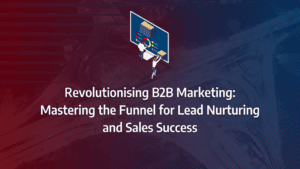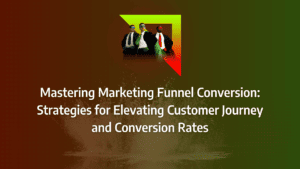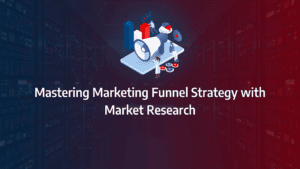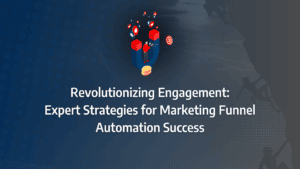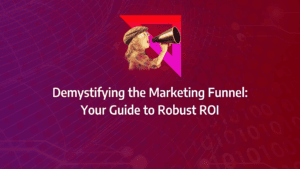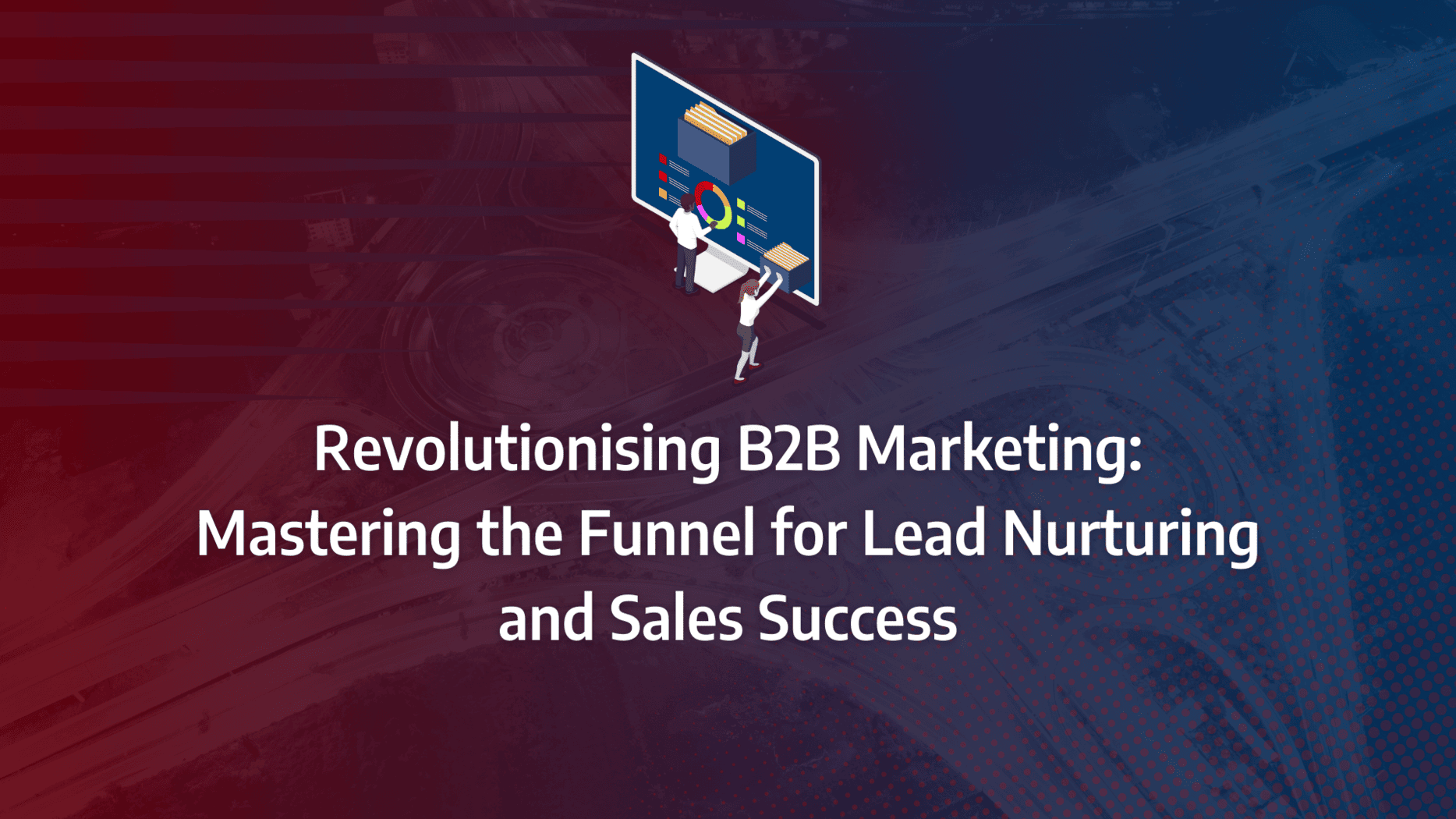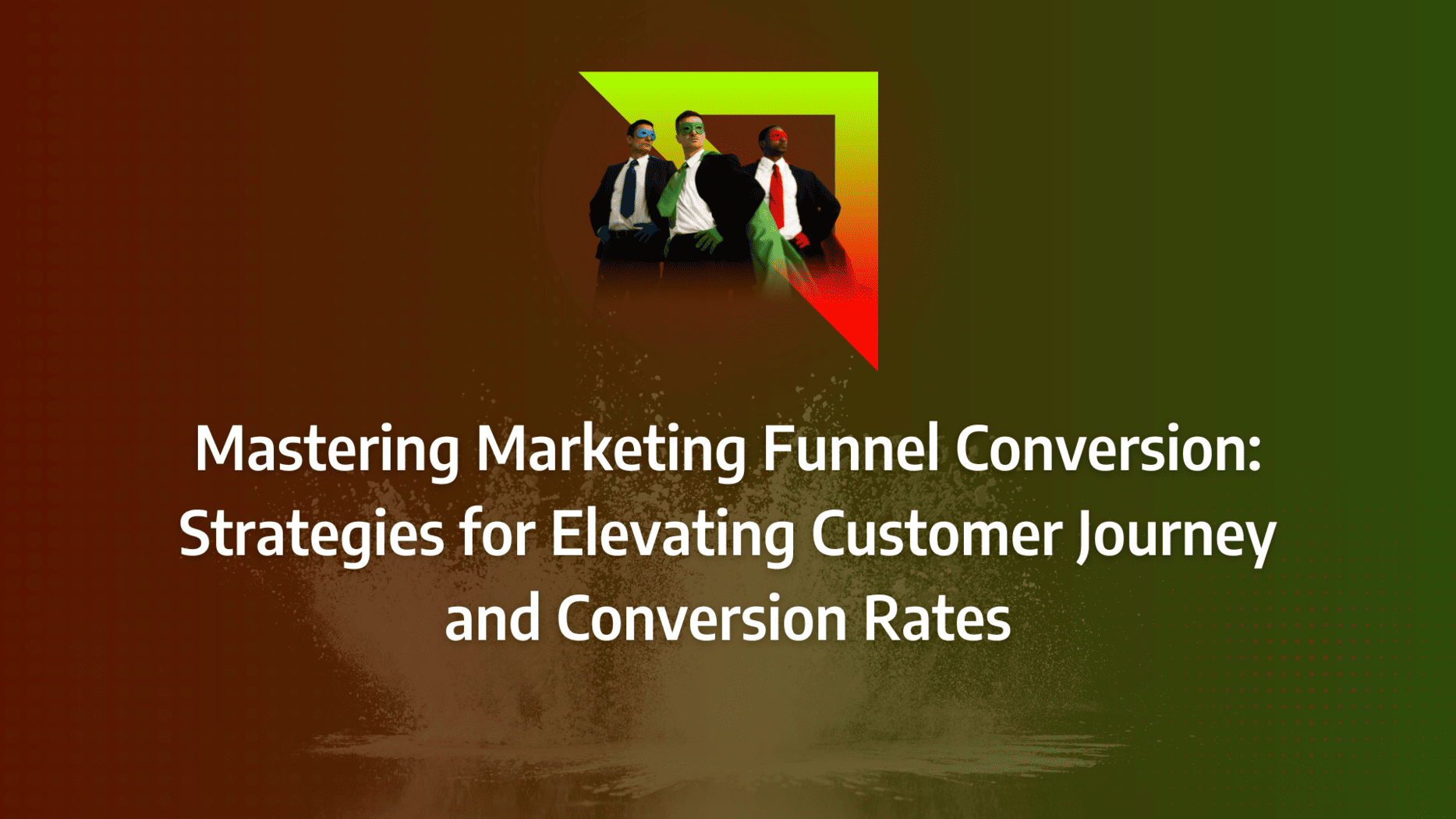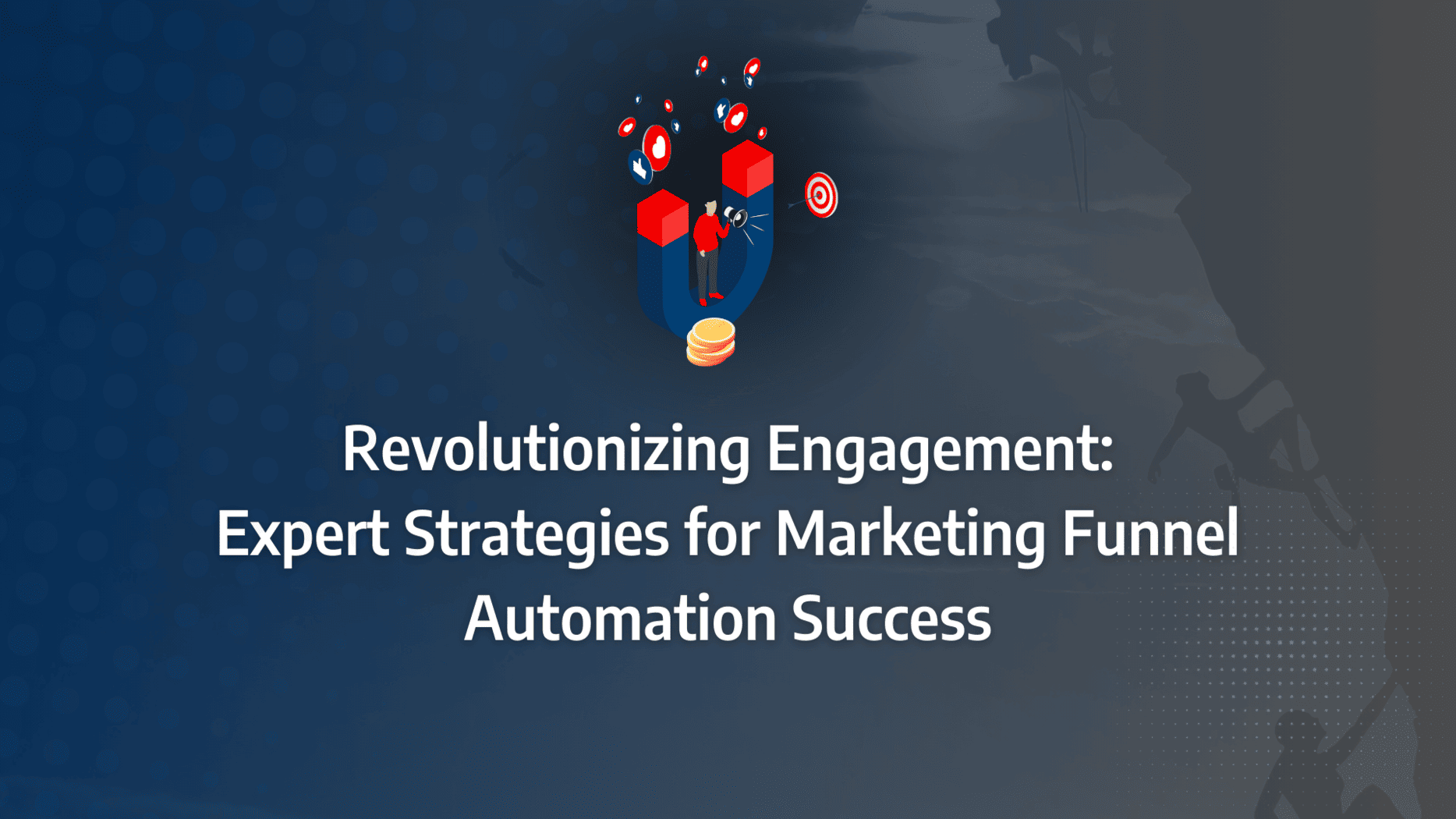A well-crafted marketing funnel can be the difference between a lead that slips through the cracks and a customer that drives revenue growth. Imagine an e-commerce company that saw an increase in conversions simply by optimising its product page funnel. Or consider a B2B SaaS company that boosted demo requests through a multi-step email nurturing sequence.
These are not just isolated success stories—they exemplify the power of a strategic marketing funnel. Yet, many businesses struggle with this crucial aspect, often missing out on significant opportunities.
In this guide, we’ll explore real-world marketing funnel examples that have delivered measurable results. From enhancing product descriptions to implementing retargeting ads, you’ll discover actionable strategies that can elevate your funnel performance and align your marketing efforts with your business goals. By the end of this post, you’ll have the insights needed to turn your marketing funnel into a powerful tool for driving conversions and accelerating growth.
- Understand the Power of a Well-Crafted Funnel: A strategically designed marketing funnel can significantly increase conversions and revenue, as demonstrated by the e-commerce company that saw a 25% boost in conversions.
- Utilise the AIDA Model: The AIDA (Attention, Interest, Desire, Action) framework is a proven method for structuring marketing funnels, ensuring each stage effectively guides prospects towards conversion.
- Leverage Lead Magnets and Content Offers: Implement lead magnets and targeted content offers to capture and nurture leads, helping them move smoothly through the funnel.
- Optimise Each Funnel Stage: Tailor your funnel to the customer journey by optimising key touchpoints, such as product pages and email sequences, to enhance user experience and drive conversions.
- Incorporate Continuous Testing: Regularly test and optimise elements like landing pages and CTAs to improve funnel performance, drawing on data-driven insights from your CRM.
- Align Funnels with Business Strategy: Ensure that your marketing funnels are aligned with broader business objectives, using them as tools to support overall growth and revenue targets.
- Implement Retargeting Strategies: Use retargeting ads to re-engage prospects who drop off at different funnel stages, increasing the chances of conversion.
- Monitor and Analyse Funnel Performance: Regularly track and analyse funnel metrics using CRM systems to gain insights into customer behaviour and identify areas for improvement.
What are the flaws in traditional marketing funnel models?
These are not just isolated success stories—they exemplify the power of a strategic marketing funnel. Yet, many businesses struggle with this crucial aspect, often missing out on significant opportunities.
Static and Linear Approach
Traditional marketing funnel examples often illustrate a linear journey, from awareness to purchase. However, in today’s digital age, the customer journey is far from linear. With numerous touchpoints and channels, it’s crucial to move beyond this outdated model. Consider the non-linear paths your prospects take. They might discover your SaaS solution through a blog post, then attend a webinar, read customer reviews, and finally sign up for a trial. Tailor your strategies to this multi-touch reality to create an effective marketing funnel strategy.
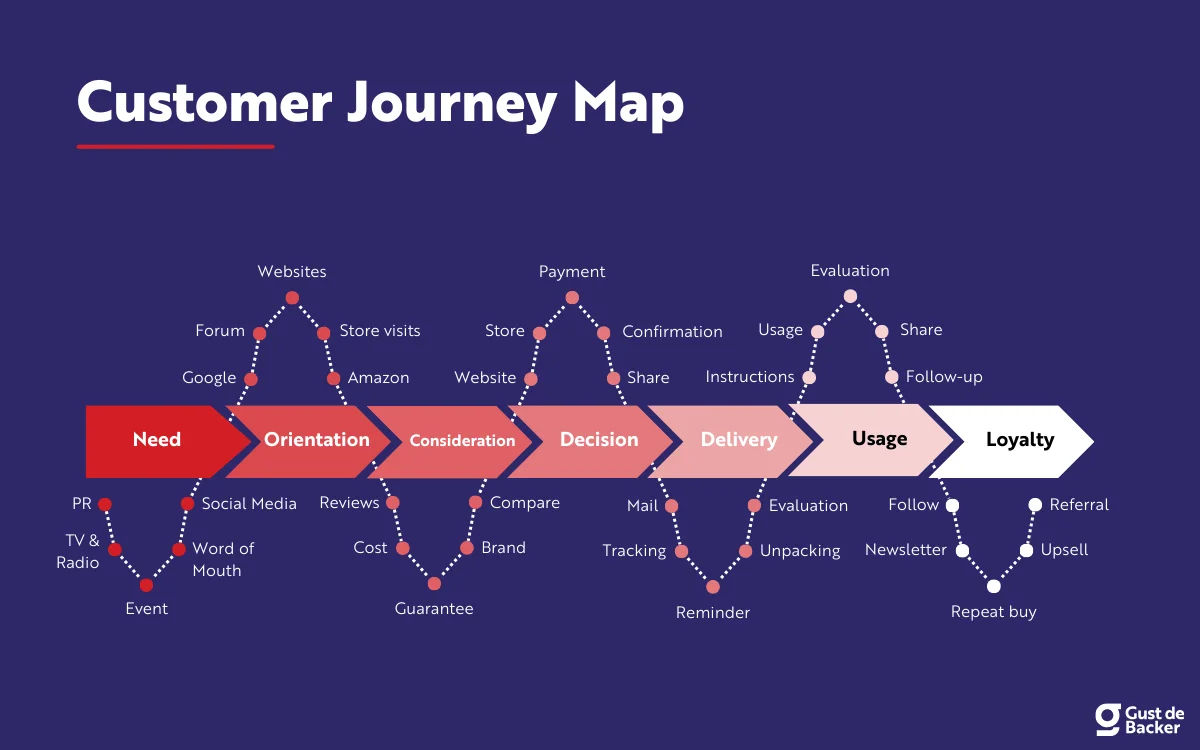
One-Size-Fits-All Mentality
Older models seldom account for the diversity of customer personas or the subtleties of their journeys. This broad-brush approach can result in missed opportunities and misallocated resources.
Segment your audience. Develop specific marketing funnel strategies for each persona, ensuring you’re addressing their unique pain points and speaking their language.
What Matters Most?
From our experience, one of the key strategic imperatives is flipping the funnel with Account-Based Marketing (ABM), a move clients often discover transforms their approach by focusing on high-value accounts rather than casting a wide net. We also find that predictive marketing, while typically complex, ensures that your funnel prioritises the right leads based on behaviour, cutting through inefficiencies. Finally, personalisation isn’t a nice-to-have anymore; it has become essential at every stage, ensuring every touchpoint resonates directly with the prospect’s needs, a point echoed by CEOs who see sharper conversion results.Get In Touch
Topo Double Funnel Model Critique
The Topo Double Funnel Model has gained popularity, but is it the ultimate solution we’ve been waiting for?
Complexity Over Clarity
While the model aims to provide a more comprehensive view of the customer journey, it can introduce unnecessary complexity. Marketers might find themselves overwhelmed by data, struggling to extract actionable insights.
Simplify when possible. While it’s essential to have a detailed understanding of your marketing funnel, avoid over-complicating your strategies. Focus on actionable metrics that drive real business results to ensure an efficient digital marketing funnel strategy.
Potential for Siloed Efforts
The double funnel can inadvertently encourage teams to work in silos, with one team focusing on one funnel and another team on the second. This lack of collaboration can lead to disjointed strategies and missed opportunities.
Foster collaboration. Ensure that teams working on different parts of the funnel communicate regularly, sharing insights and aligning their efforts for maximum impact. By doing so, you create a cohesive example of a digital marketing funnel that drives success.
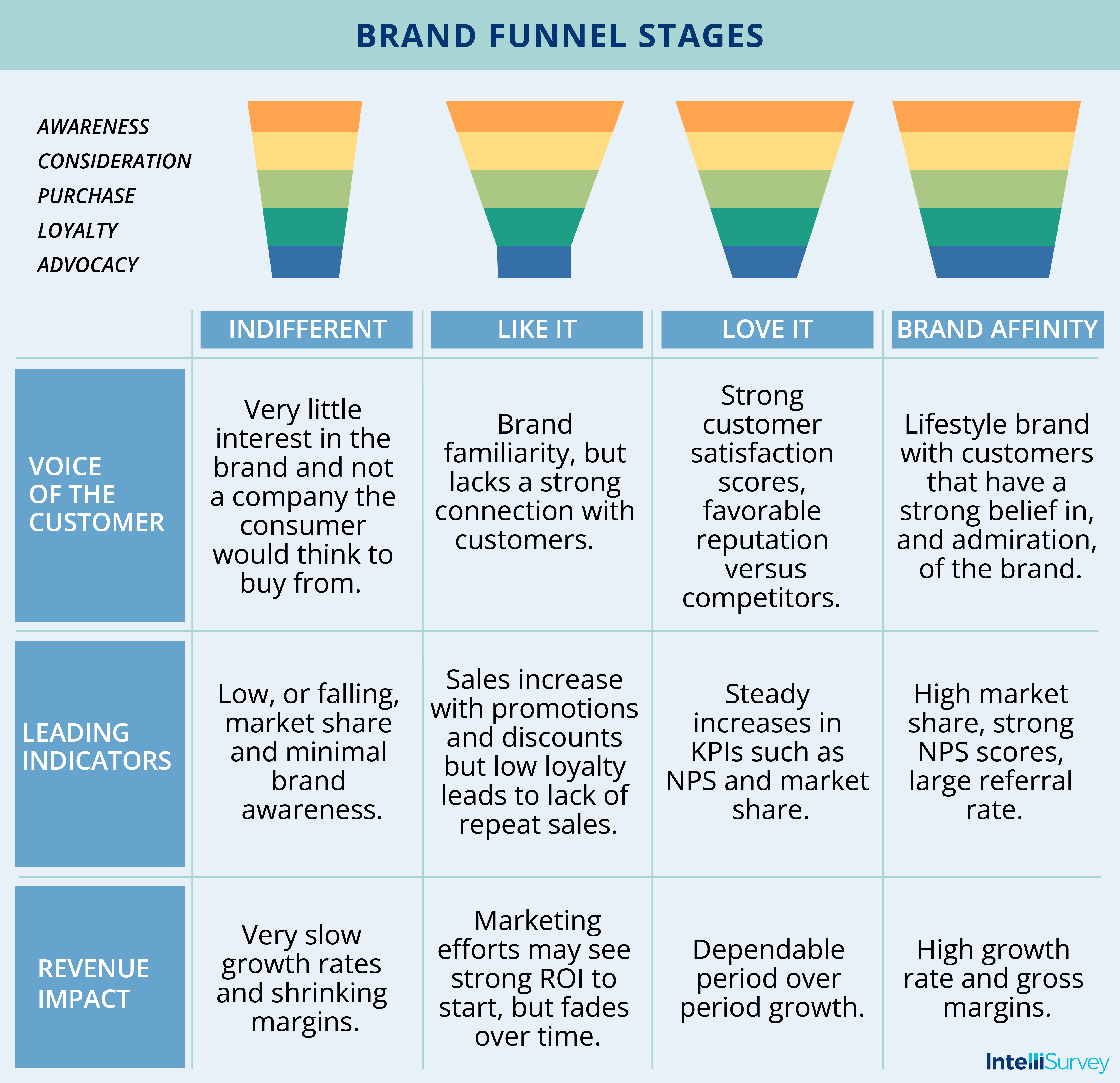
How does Netflix’s marketing funnel attract and convert leads?
Netflix
Netflix stands as the leading content streaming service, with 51% of United States users streaming through its platform. The brand’s marketing funnel strategy starts with a straightforward website, ensuring users can navigate it without confusion. To keep it dynamic, Netflix updates the background image based on the shows currently being promoted.
Netflix employs a two-step sales process that encourages leads to enter their marketing funnel via a free one-month trial offer. When users click on the call-to-action (CTA) to subscribe to the free trial, they are directed to the pricing page, where different package options are provided. Subsequently, Netflix collects email addresses from users to facilitate follow-ups if someone opts out of the paid plans. They reassure users that the process will conclude swiftly. On the next screen, credit card information is gathered, converting everyone who enters the sales funnel into a paying customer unless they cancel before the trial period ends.
Key Takeaways:
- Netflix uses a single CTA button on the opt-in page, prominently placed at the top for easy visibility.
- Once consumers enter the funnel, the only action required is straightforward, eliminating any guesswork for leads.
- Netflix maintains ongoing communication, allowing for tracking and converting leads through email.
- Every individual who enters the funnel for the free trial has the potential to become a paying customer.
Basecamp
Basecamp, a widely-used project management tool, facilitates efficient collaboration among remote employees. Basecamp relies heavily on word-of-mouth marketing to generate awareness and attract consumers to the top of their funnel. Afterwards, leads are directed to a page where they can specify their needs.
Basecamp simplifies the decision-making process for customers by offering a clear page showcasing the product’s features. This page is followed by a testimonial page, which further validates the product’s quality. The FAQs at the end of the page enhance conversion rates by reminding customers that Basecamp offers the right solutions. When users sign up, they are taken to a simple page requiring only their name and email address.
Key Takeaways:
- Basecamp attracts leads to the top of their funnel through blogs, organic search, and PR.
- The homepage demonstrates the product in action and features a logo with a face to foster an emotional connection.
- The 30-day trial does not initially require credit card information, providing more incentive to sign up.
- The pricing page is clear and straightforward.
Source: Persuasion Nation
MailChimp
MailChimp, a premium email marketing tool, offers a free plan, effectively expanding its business reach. A key element of this strategy is the “Powered by MailChimp” tag, which every email sent through the platform includes. This feature enables a viral loop, as each email recipient becomes a potential promoter of the service.
Key Takeaways:
- Generating Awareness: MailChimp creates awareness through a mix of organic traffic, direct emails, blogs, and word-of-mouth marketing.
- Aspirational Marketing: MailChimp’s initial marketing step focuses on aspirational messaging. They promote themes of freedom, identity, and self-expression, which enhances conversion rates and persuasiveness.
- A/B Testing: To refine their marketing strategy, MailChimp utilises A/B testing. This method ensures the most effective aspirational marketing messages reach their customers.
- Ease of Signup: To encourage signups, MailChimp simplifies the process by only requiring an email address, username, and password.
- Flexible Pricing: The pricing page includes a feature where prospects can calculate the costs of different plans, helping them choose the option that best fits their needs.
More Marketing Funnel Examples from Leading Global B2B and B2C Brands
Twilio
Twilio provides communications APIs, a specialised service that developers can integrate for voice calling and communication plans within their products. Given the complexity of their offering, Twilio understands the importance of effectively communicating its specific features to leads.
- Top of the Funnel: Potential leads can easily find Twilio by searching for “communications APIs” on Google, where Twilio ranks highly. They leverage substantial social media efforts and a blog to engage leads. Additionally, Twilio offers a fun, self-paced game to encourage further learning. Once leads sign up, they can start with a free account or receive a call from a representative.
- Middle of the Funnel: After becoming a lead, visitors provide their company name, job title, and select the product they are interested in.
- Bottom of the Funnel: Qualified leads receive more detailed information on pricing, implementation, and ROI, helping them make an informed decision about using Twilio.
Help Scout
Help Scout is a help desk application favoured by small and medium-sized businesses and freelancers. The platform provides a shared inbox for team collaboration when support emails are received.
Help Scout utilises a straightforward yet effective marketing funnel strategy by thoroughly understanding their leads.
- Top of the Funnel: Help Scout attracts leads with a comprehensive blog and resource page. Their homepage is clean, visually appealing, and includes substantial social proof along with a clear call to action.
- Middle of the Funnel: Qualifying questions are posed to those advancing to this stage. The primary question is, “How many users do you expect to use Help Scout?” For those expecting 11 or more users, a representative will call to guide them through the process.
- Bottom of the Funnel: Help Scout’s pricing page provides all necessary information for leads. Users simply enter specific details to start their free trial.
Tricentis
Tricentis offers a suite of products for software testing, including integration, automation, and optimisation tools. These innovative tools are designed for continuous software testing and quality assurance.
-
- Top of the Funnel: Recognising their target audience, Tricentis ensures they rank highly in search engine results for “software testing tool”. Visitors can join a free trial by selecting “Ask an Expert” or “Talk with Sales” upon entering the website.
- Middle of the Funnel: When a lead is contacted by a representative, additional information such as job title and company name is collected. This strategy helps in qualifying the leads effectively.
- Bottom of the Funnel: To aid in the purchase decision, Tricentis provides leads with reassurances, detailed pricing information, an ROI calculator, customer success stories, and additional perks.
Our Tactical Recommendations
In our work, we often see how simplifying the funnel, especially removing unnecessary stages, accelerates time-to-value, creating more fluid lead progression. Clients typically learn that retargeting is invaluable for recapturing lost prospects who drop off mid-funnel, making sure no opportunity is left behind. Additionally, automating key engagement points based on real-time behaviour proves to be a game-changer for companies, as it keeps leads warm without constant manual intervention, leading to improved conversion efficiency.Get In Touch
What strategies do brands use at each stage of the marketing funnel?
Increase Conversions at the Awareness Stage
Leads will not enter the funnel if they are unaware of your brand’s existence. Moreover, converting them into customers is impossible if they do not trust your brand. Therefore, establishing your brand as an industry leader is crucial. Here are the most common awareness tactics for attracting new leads:
- Blogging: This tactic remains a cornerstone of internet marketing. Brands should consistently produce content related to their product or service, showcasing expertise and providing valuable insights.
- social networking and Publishing: Consumers heavily rely on social networking platforms for recommendations, reviews, and referrals. Social proof increases awareness and builds trust. Engage new leads by maintaining an active presence on social media networks.
- Pay-per-Click Campaigns (PPC): PPC campaigns allow brands to pay for advertisements on various websites. Brands are charged only when a lead clicks on the ad or based on the number of impressions the ad receives. PPC campaigns are effective in driving traffic to landing pages, where prospects can be converted by capturing their email addresses.
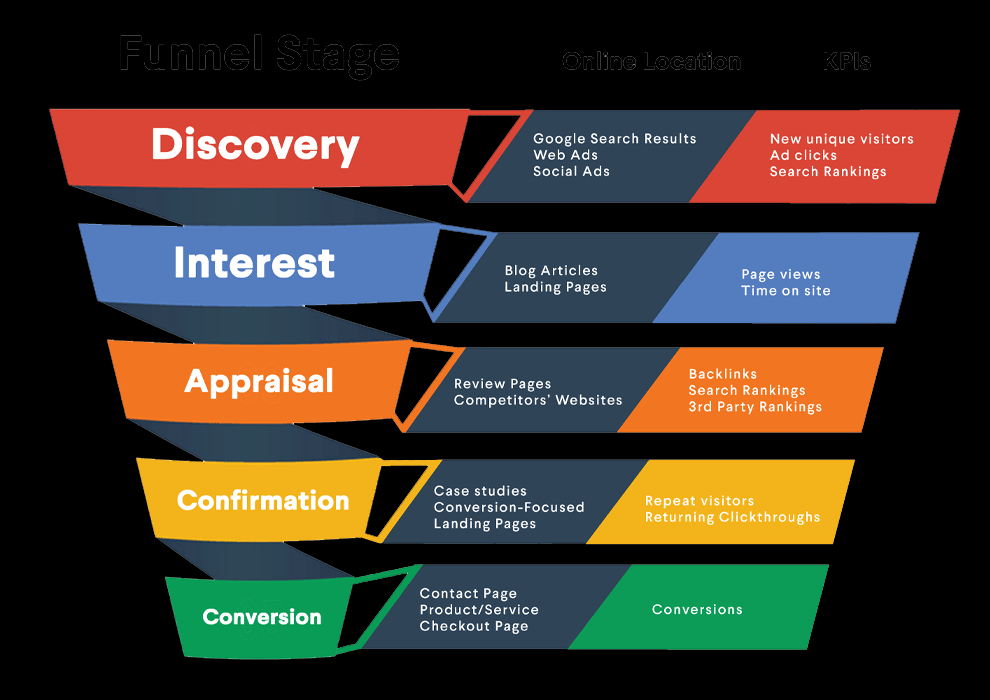
Improve Conversions in the Consideration Stage
The primary objective of the consideration stage is to obtain the customer’s email addresses. This is the optimal time to engage customers and encourage them to make small commitments to the brand. The best strategy to succeed in this stage is by creating lead magnets that address the customer’s problems in exchange for their contact information.
- Create Landing Pages: A landing page is a focused page on your website designed to address a specific problem. The goal is to capture the lead’s contact information or make a sale. It should feature a single, clear call to action.
- Call-to-Action (CTA): CTAs should be strategic, providing sufficient information to encourage customers to take action. Brands need to determine the desired action and incorporate a clear call to action multiple times on the page.
- Forms: Contact forms, often found on confirmation pages, are simple yet frequently overlooked. They provide an opportunity to add subscribers to your list. Always include an option for the visitor to choose to receive your email newsletter.
Source: Adobe
Increase Conversions in the Preference Stage
The objective at this stage is to pre-qualify prospects and leads. This is the optimal time to educate customers about the brand and demonstrate that your product or service is the ideal solution.
- Email: Educate leads about the business by sending straightforward emails. For instance, send automated emails to subscribers answering the most frequently asked questions.
- Auto-responders and Email Drips: Drip marketing is a highly effective strategy for engagement. When executed correctly, an autoresponder series can guide customers further into the funnel, ultimately leading them to a sale.
- CRM and Sales Integration: Customer Relationship Management (CRM) software helps track interactions with existing and potential customers. It is the best tool to identify where prospects currently are in the sales funnel and provide them with tailored content.
Improve Conversions in the Purchase Stage
The objective at this stage is to finalise the sale. This is the prime opportunity to encourage customers to complete their purchase. Ensure customers have clear and frequent opportunities to buy.
- Ecommerce Promotion: Brands selling products should consistently promote them. Do not assume that customers know their way around the marketing funnel examples just because they visited the website. Make it easy for customers to find products and optimise the checkout page with tools like live chat or free shipping offers.
- Targeted Transactional Content: Brands can set up automated emails offering products to leads who have reached the end of a drip campaign or provide free shipping to customers who abandoned their shopping cart without purchasing.
- Social Monitoring: Monitoring keywords related to the brand can help identify customers who are ready to make a purchase. This proactive approach ensures timely engagement with potential buyers.
Increase Conversions in the Loyalty Stage
The goal at this stage is to encourage repeat purchases and foster long-term customer loyalty.
- Referrals: Actively ask existing customers for referrals. Offering discounts on their next purchase can incentivise loyalty and expand your customer base.
- Resell: Encourage customers to repurchase products they have previously bought. Many customers just need a gentle reminder to repurchase a product or service they enjoyed.
- Reminders: Help customers remember important dates related to the product or service. This can be achieved through reminder emails, ensuring they feel valued and thought of.
- Upsells and Cross-sells: Encourage customers to buy more expensive products, packages, or add-ons during and after the sale. This not only increases the average order value but also enhances the customer experience by providing more value.
- Gratitude: Show appreciation by emailing customers on important dates. This gesture can remind them why they chose your brand, fostering a deeper emotional connection and increasing the likelihood of repeat business.



